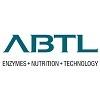Explore all the information on
Poultry management
Poultry management usually refers to the husbandry practices or production techniques that help to maximize the efficiency of production. Sound management practices are very essential to optimize production. Scientific poultry management aims at maximizing returns with minimum investment. A carefully controlled environment that avoids crowding, chilling, overheating, or frightening is almost universal in poultry farming. Cannibalism, which expresses itself as toe picking, feather picking, and tail picking, is controlled by debeaking at one day of age and by other management practices. The feeding, watering, egg gathering, and cleaning operations are highly mechanized. Birds are usually housed in wire cages with two or three animals per cage, depending on the species and breed, and three or four tiers of cages superposed to save space. Cages for egg-laying birds have been found to increase production, lower mortality, reduce cannibalism, lower feeding requirements, reduce diseases and parasites, improve culling, and reduce both space and labour requirements.
Mike Czarick (University of Georgia) comments on the factors to consider when choosing the right kind of fan, in this Engormix interview during IPPE 2025 in Atlanta, USA....
Comments : 0
Recommendations: 1
In this Engormix interview during IPPE 2025 in Atlanta, USA, Tom Tabler (University of Tennessee) explains the need for a good biosecurity plan in poultry farms and how recent outbreaks like Avian Influenza remind the industry of its relevance....
Comments : 0
Recommendations: 1
About this Webinar (Free for PSA Members!)
In today's competitive poultry industry, optimizing bird performance is essential for maximizing productivity and maintaining a healthy flock. This webinar will explore science-based strategies to enhance efficiency, improve overall...
Comments : 1
Recommendations: 0
INTRODUCTION Feed management practices, aiming to improve animal welfare without increasing production cost, are becoming more important for the poultry industry (Mateos et al., 2012). In broilers, ad libitum feeding of pellet feeds is associated with a reduction in starch digestibility (Svihus and Hetland, 2001; Abdollahi et al., 2011; Serrano et al., 2013) and an increase in the incidence of metabolic problems (e.g., ascites and lameness) and mortality (Leeson et al., 1999;...
Comments : 2
Recommendations: 0
Annie Kneedler (Chief of Party – USAID TRANSFORM at Cargill) comments on the TRANSFORM project activities and how to improve animal health through global collaboration, in this Engormix interview....
Comments : 1
Recommendations: 2
Rearing Systems in Broiler Breeder Farms Author:A. Ashraf Ali Introduction India's poultry sector is experiencing remarkable growth, with broiler breeder farms (parent stock farms) serving as the backbone of hatchery operations. These farms supply hatching eggs, ensuring a steady pipeline for broiler chicken production. For entrepreneurs planning to establish a broiler breeder farm, evaluating land requirements, shed construction costs, equipment investments, and overall...
Comments : 0
Recommendations: 0
The poultry industry is one of the fastest-growing sectors in global agriculture, providing a critical source of protein through meat and eggs. Beyond its contribution to food security, the poultry value chain serves as a significant driver of economic development, offering opportunities for inclusive growth across rural and urban communities. By leveraging its multi- faceted value chain, the industry can address social, economic, and environmental challenges while fostering equitable...
Comments : 0
Recommendations: 3
Paulo Teixeira, Vice President for Animal Nutrition in the Americas at Evonik, introduces a provocative campaign designed to spark awareness and action on sustainability. With Evonik’s deep expertise in nutrition and animal production, the campaign challenges the industry to rethink crude protein use, reduce nitrogen emissions, and drive more sustainable operations. ...
Comments : 0
Recommendations: 1
Vijay Durairaj (Huvepharma) discusses lesions, PCR sequencing, and vaccination strategy in this Engormix interview during IPPE 2025 in Atlanta, USA....
Comments : 0
Recommendations: 0
Jose Linares (Ceva Animal Health) explains how to correctly identify and prevent this contagious viral disease in this Engormix interview during IPPE 2025 in Atlanta, USA....
Comments : 0
Recommendations: 1
Jörg Hurlin (Agri Advanced Technologies) discusses their specialized systems for hatching egg sanitation, in-ovo sexing, and breeder sorting in this Engormix interview during IPPE 2025 in Atlanta, USA....
Comments : 0
Recommendations: 1
Mike Petrik (Petrik Veterinary Consultants) discusses four in-ovo sexing technologies and their differences in this Engormix interview during IPPE 2025 in Atlanta, USA....
Comments : 0
Recommendations: 1
Angela Guaiume (Cargill) explains the benefits and impact of this technology on egg production and persistency of lay, in this Engormix interview during IPPE 2025 in Atlanta, USA....
Comments : 0
Recommendations: 0
Colwayne Morris (Zinpro) speaks on carcass analysis, challenges found in processing plants, quality assurance, and cost reduction, in this Engormix interview during IPPE 2025 in Atlanta, USA....
Comments : 0
Recommendations: 2
INTRODUCTION The storage of hatching eggs is a common routine in hatcheries and varying in duration depending on hatchery capacity and the demand of day old chicks (Gharib, 2013). In some cases, the need of extending the period of storage more than seven days may takes place. Hatching eggs are stored, generally, to minimize transport cost or to collect enough eggs for high capacity incubators. Egg storage for more than 7 days deteriorated the egg white, increased embryonic...
Comments : 2
Recommendations: 1
Global poultry industry scenario The value of the worldwide poultry market increased significantly between 2022 and 2023, from $352.02 billion to $378.84 billion, representing a 7.6% CAGR. Experts predict that the poultry market will continue to expand and reach $487.39 billion by 2027, growing at a CAGR of 6.5% (research and markets,). Producing chicken on a big scale comes with several issues, including rising production costs, concerns about animal welfare, a manpower...
Comments : 4
Recommendations: 1
Alberto Torres (Exports Manager, Cobb-Vantress) offers insights and recommendations on international guidelines and regional restrictions regarding Avian Influenza, in this Engormix interview....
Comments : 0
Recommendations: 0
Alberto Torres (Exports Manager, Cobb-Vantress) discusses the frameworks to apply the concept of sustainability, considering both environmental and financial aspects, in this Engormix interview....
Comments : 0
Recommendations: 0
Vanessa Delgado, Retail & Brand Manager, and Shivam Dhawan, both from Premium Chick Feeds discuss their journey into processed poultry, leveraging innovation and data-driven decisions to enhance profitability. Learn about their challenges in raw material costs, forward marketing, and quality education for clients, as well as their vision for India’s growing poultry industry fueled by rising protein demand and modern consumer habits....
Comments : 0
Recommendations: 0
Henk Struving, Sales Director at Heering, introduces advanced transport solutions for day-old chicks developed by this Dutch family-owned company. With global experience and partnerships with genetic companies like Hi-Lyne, Heering ensures safe and efficient transportation from hatcheries to farms. ...
Comments : 0
Recommendations: 0




.jpg&w=3840&q=75)



















.jpg&w=3840&q=75)

.jpg&w=3840&q=75)













